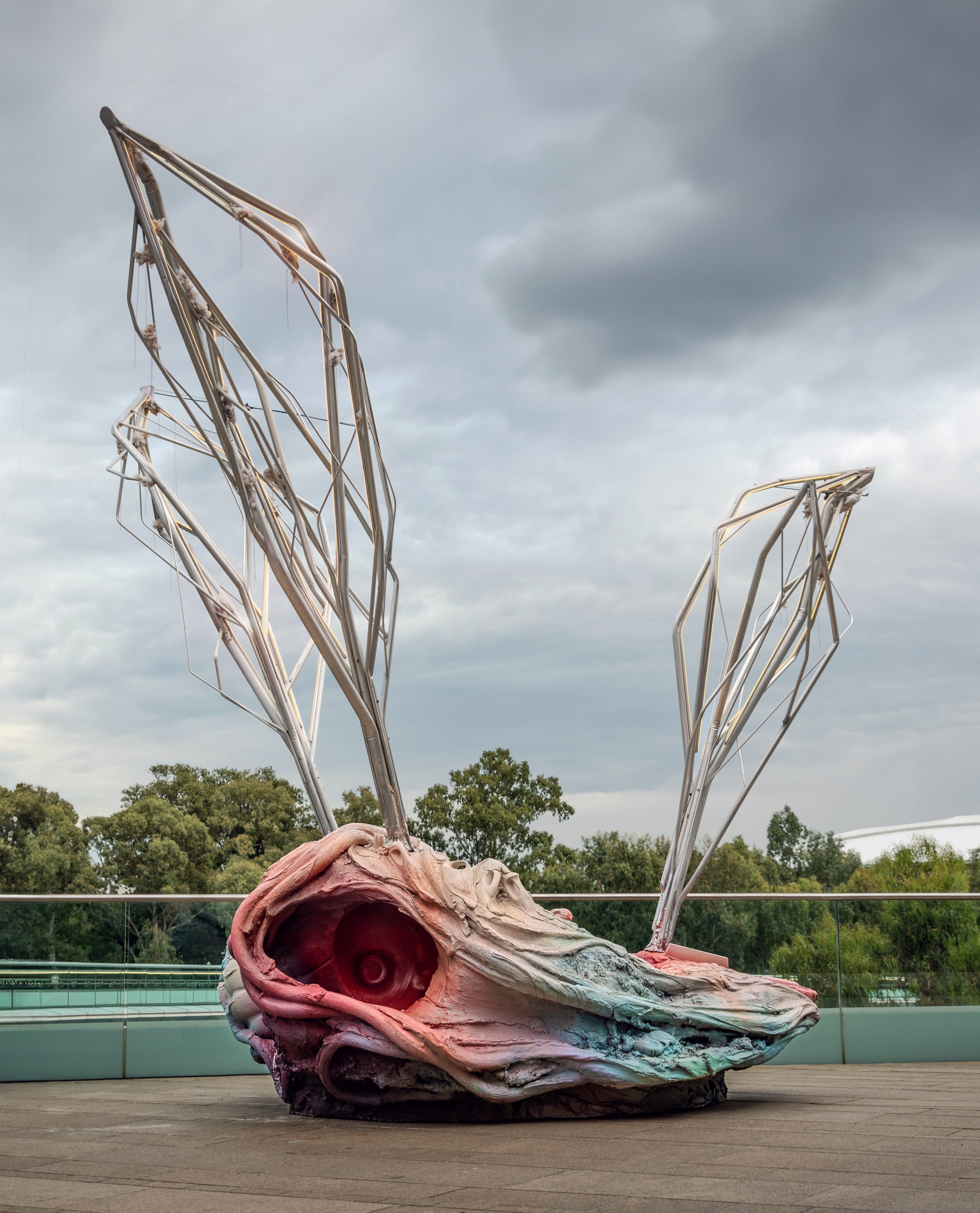
Adelaide Festival Centre Plaza
GRC, Aluminium, paint, LED lighting, resin, pewter
‘aeolidida’ may not be the easiest of words to pronounce. It’s not a familiar looking word. It’s a bit of a tongue twister but has a nice round sound to it, and it feels good when you write it by hand. The word offers up abstract and fictional associations, but it also refers to a real life species of soft bodied sea creatures, more commonly known as Sea Slugs. These creatures, which inhabit all the oceans of the world, often present themselves in the most fantastic, elegant forms and vivid colour patterns. This is something that they themselves may not be able to appreciate, given that their eyes are so small that they can probably only see dark and light tones. They make up for this lack of sight with other more sensitive sensory organs (that of touch, smell and taste). They are hermaphrodites, containing both male and female sexual organs, and most of them can regrow their head if it comes off. Nice.
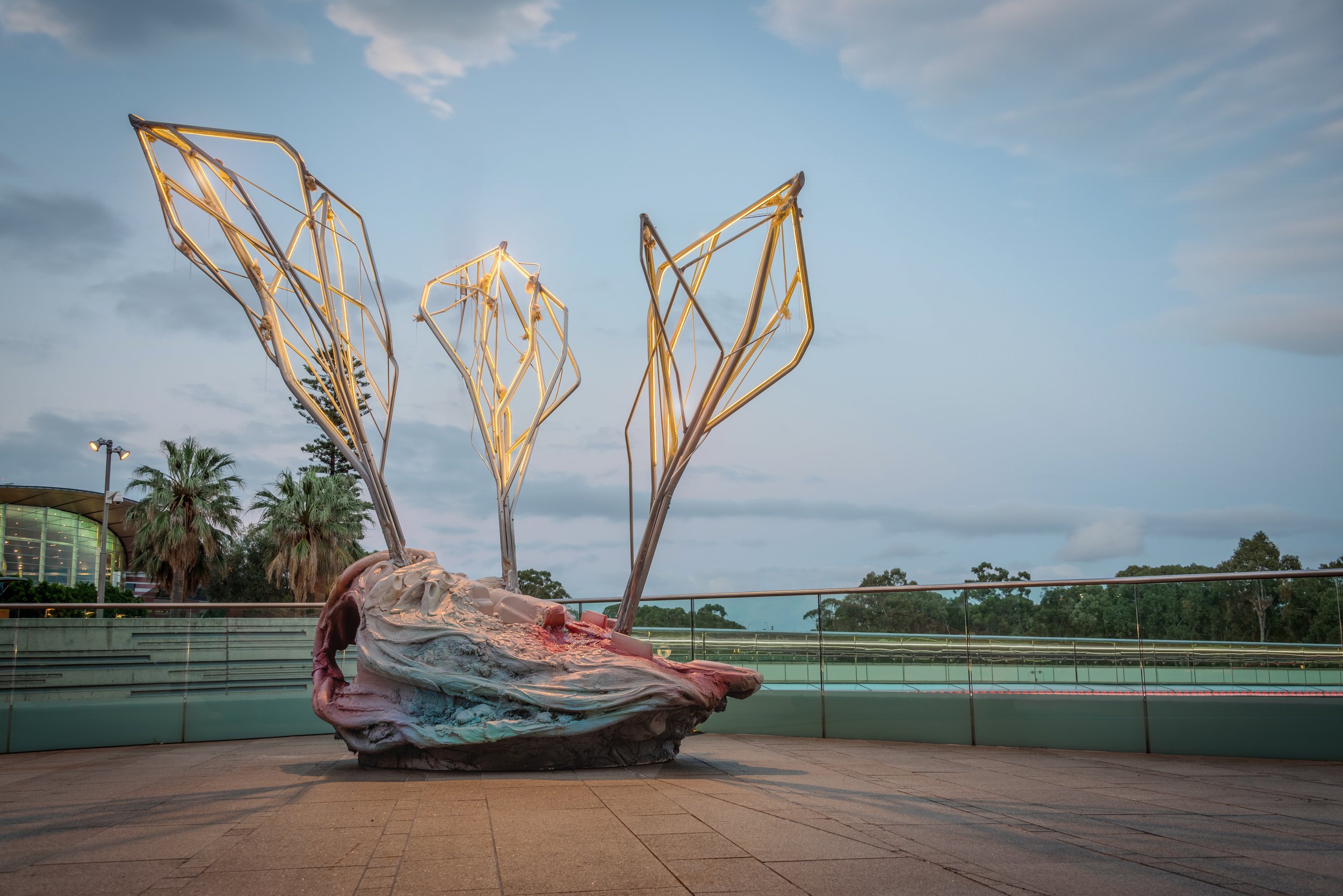
As a sculpture made specifically for the 50th anniversary of the Adelaide Festival Centre, it’s site-specificity relies largely on it being a contrast to its surroundings, a kind of organic alien form within an otherwise urban environment of geometry and functionality. Its textured and patterned skin is an accumulation of haptic memories and sensations. For a form made of concrete, it is relatively lively looking, free-forming and suggestive of being in a state of flux. Its extrusions, or ‘branches’ are upward and celebratory in gesture, resonating with memories of the very first public performance given on the Festival Centre stage. The glowing rhythm played out in these branch forms is a luminescent visual echo transcribed from the sounds of Beethoven’s Fidelio which was played here 50 years ago.

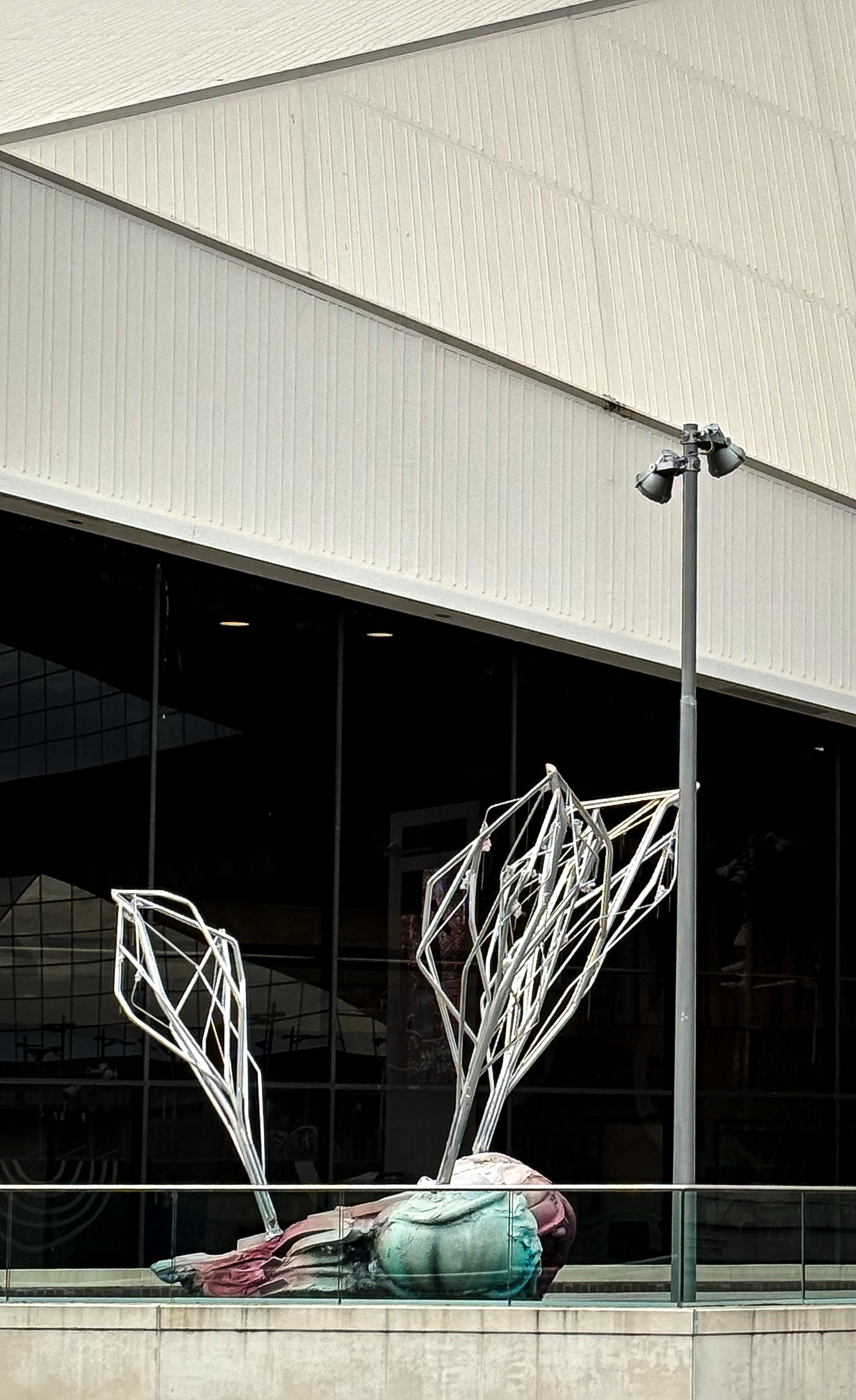
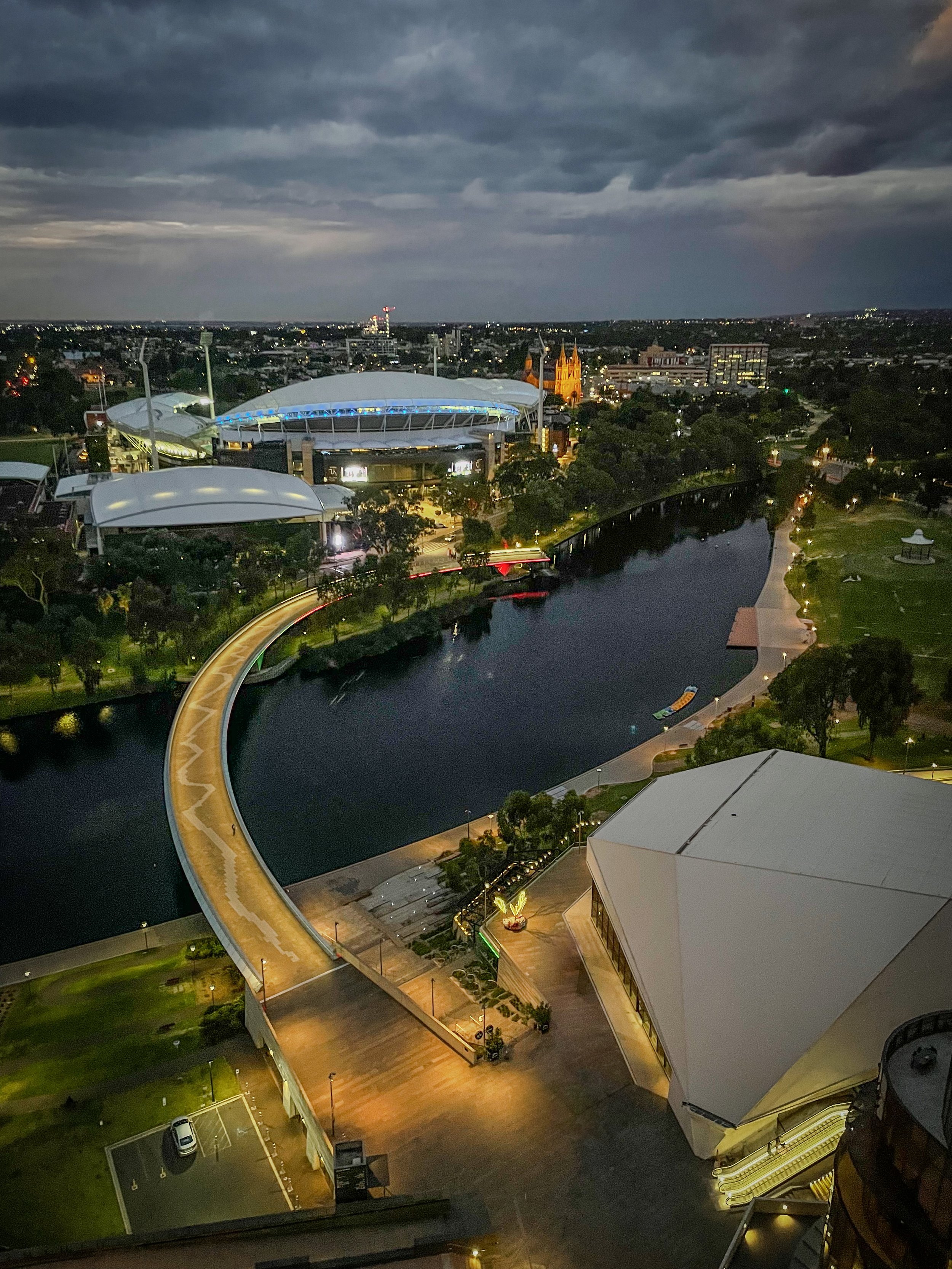
Top view looking over the Dunstan Playhouse and Torrens walkway bridge where the sculpture is situated
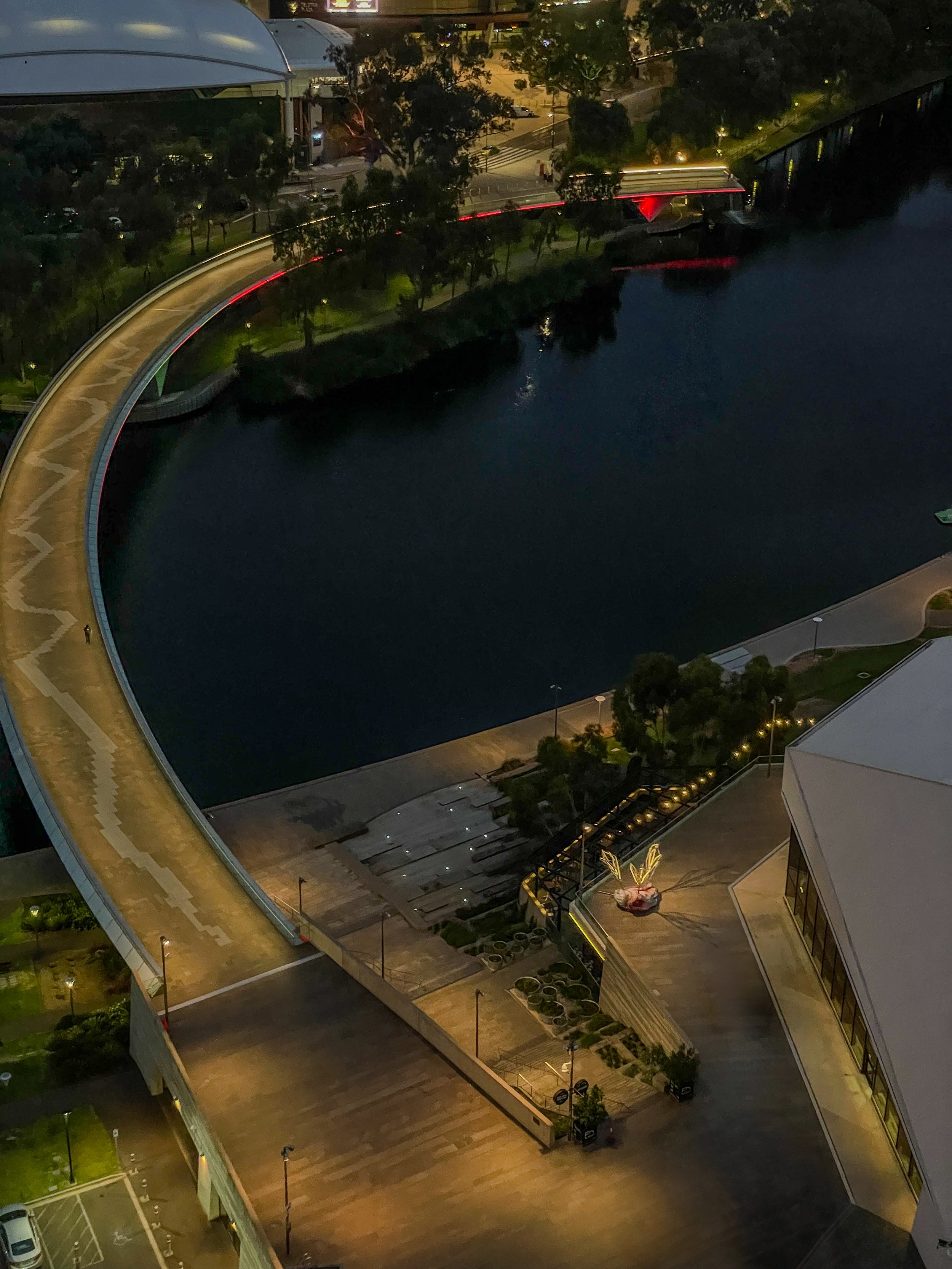
Top view looking over the Dunstan Playhouse and Torrens walkway bridge where the sculpture is situated

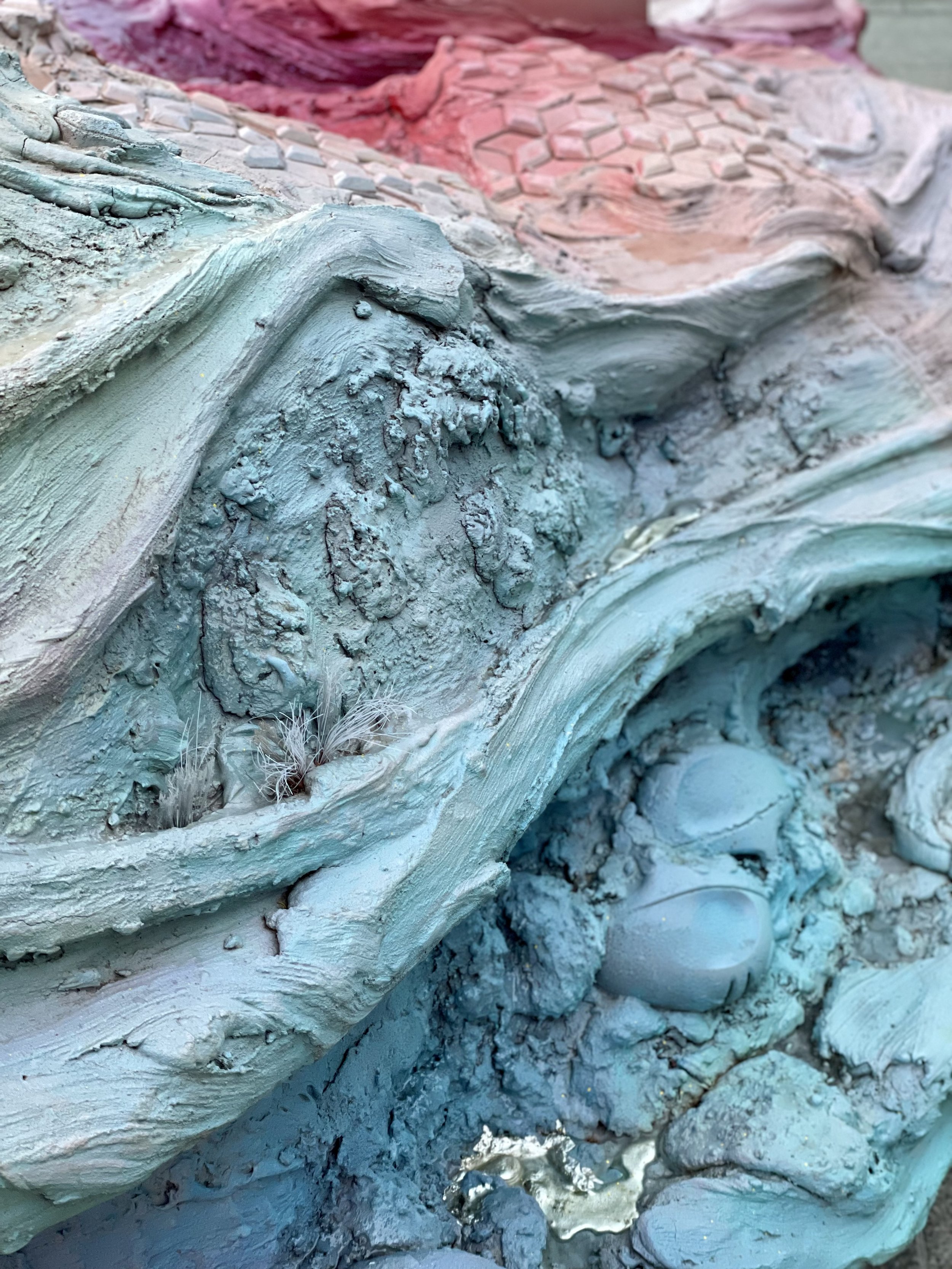
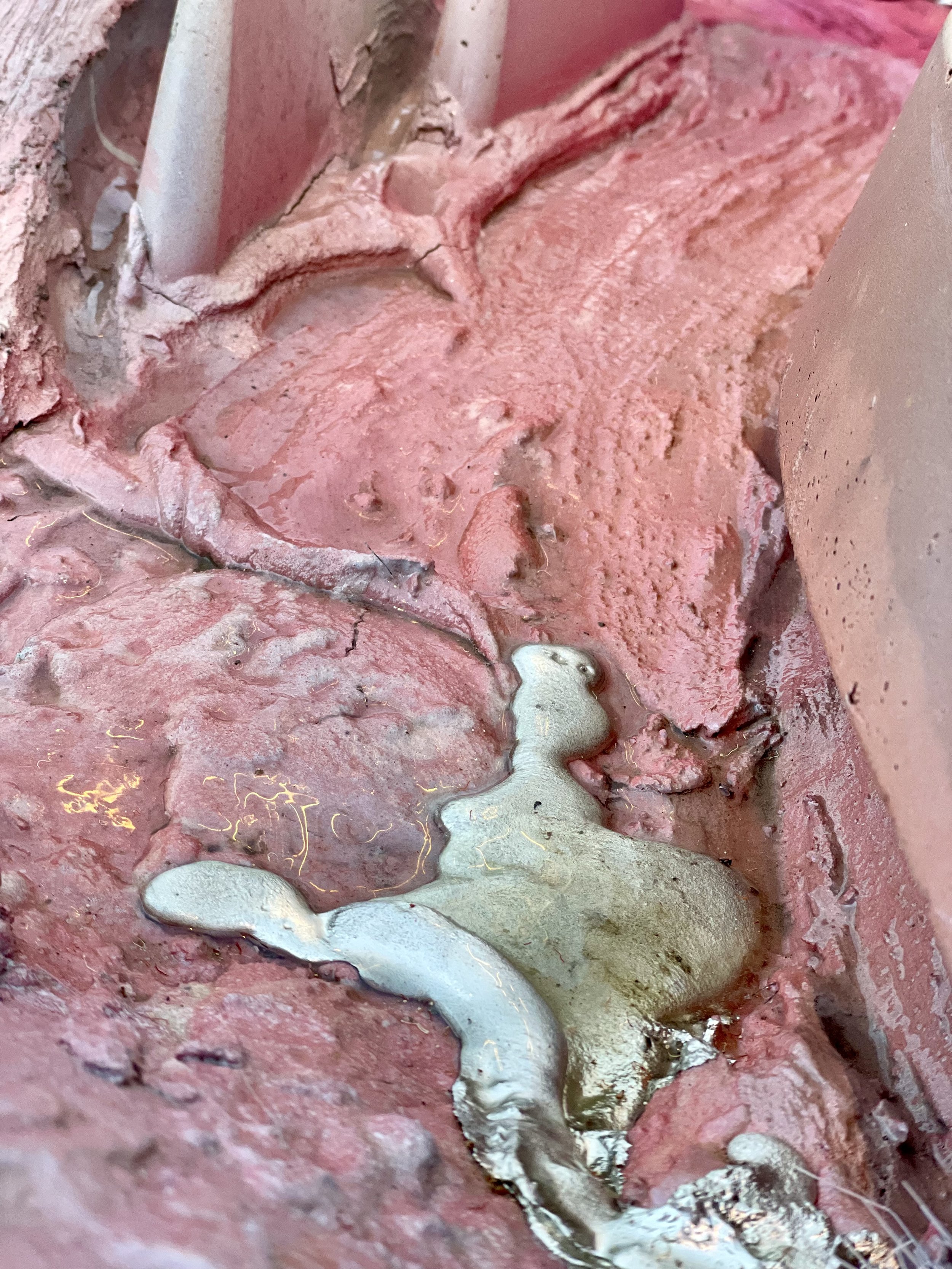
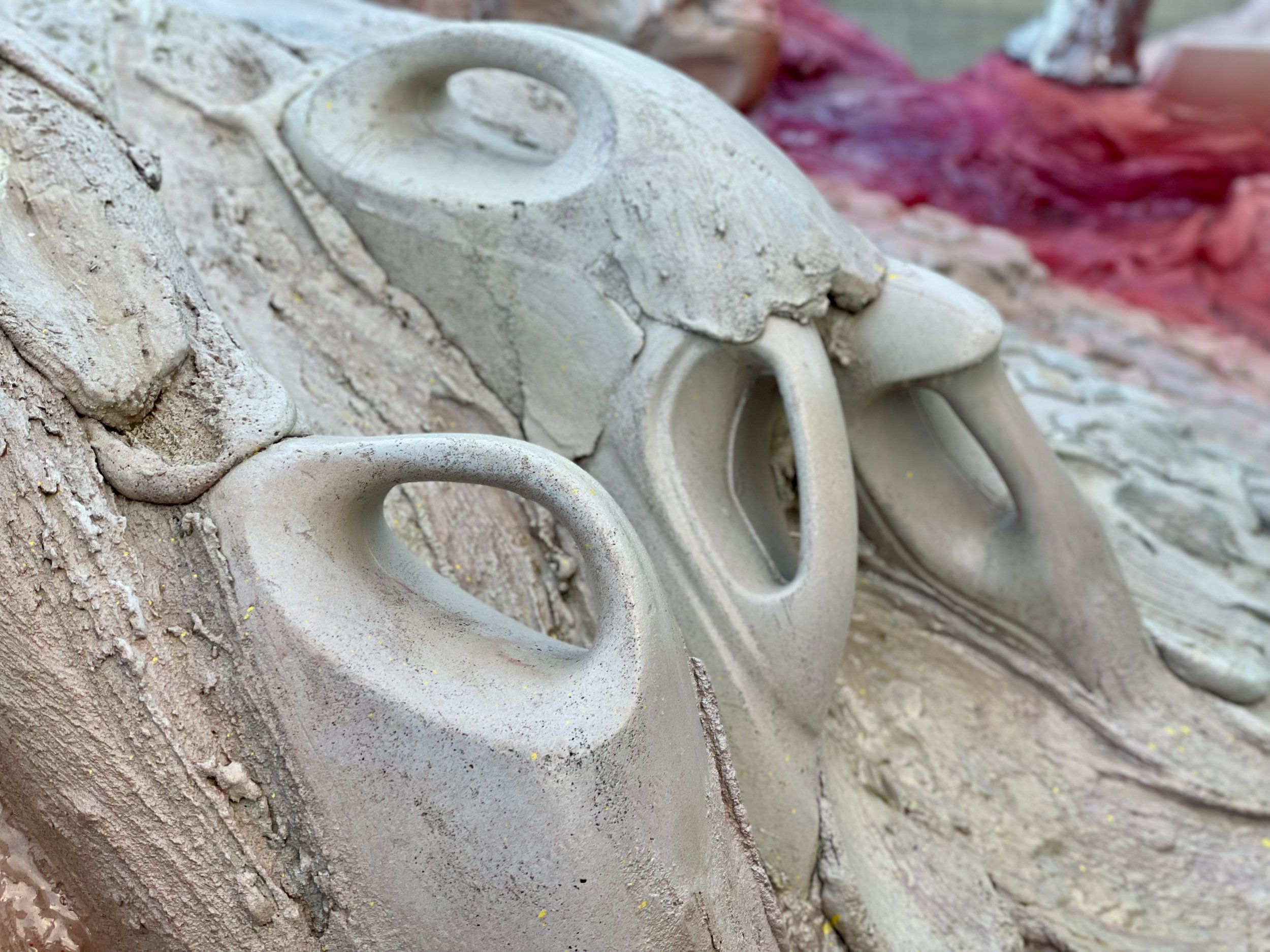
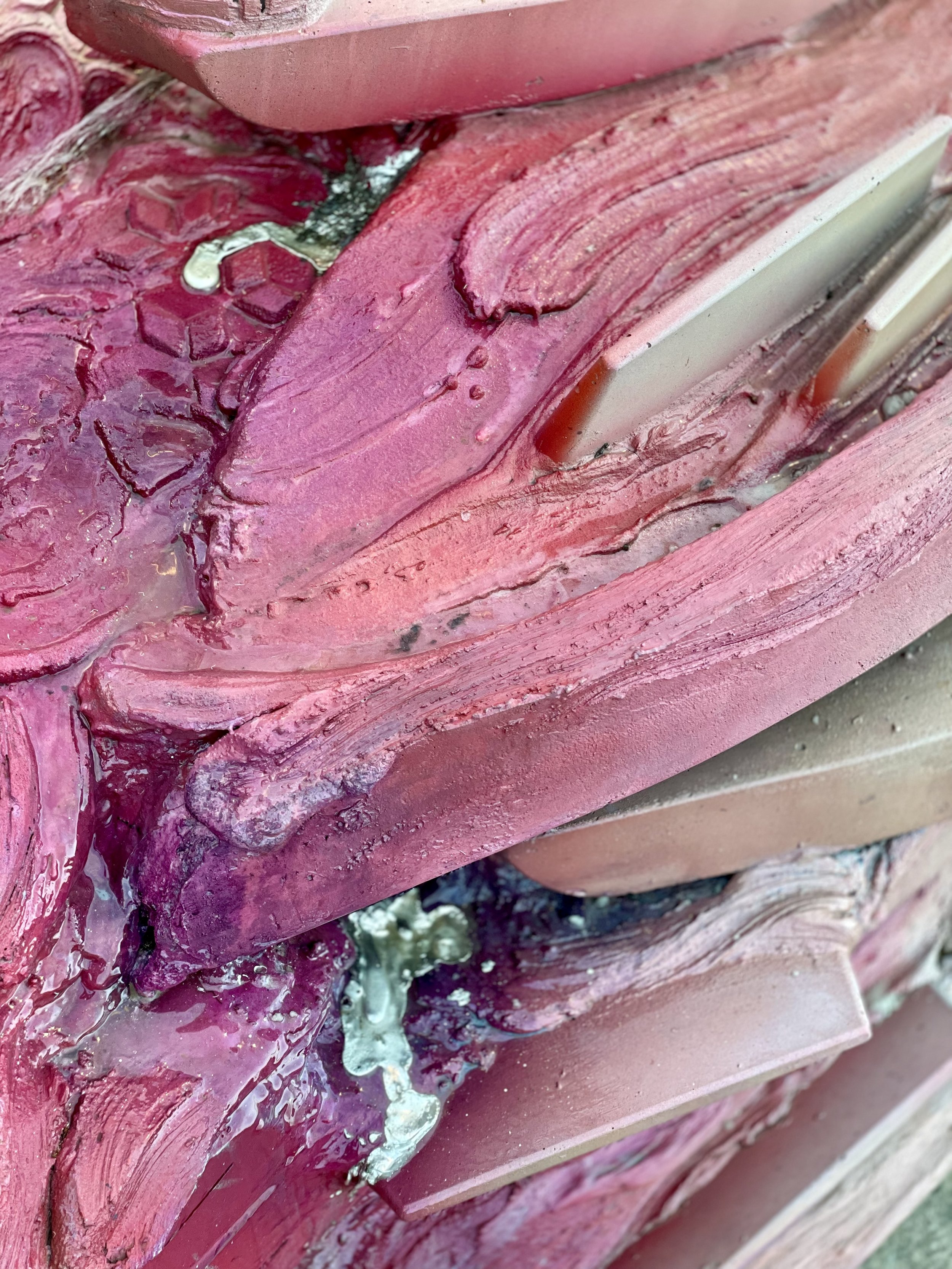
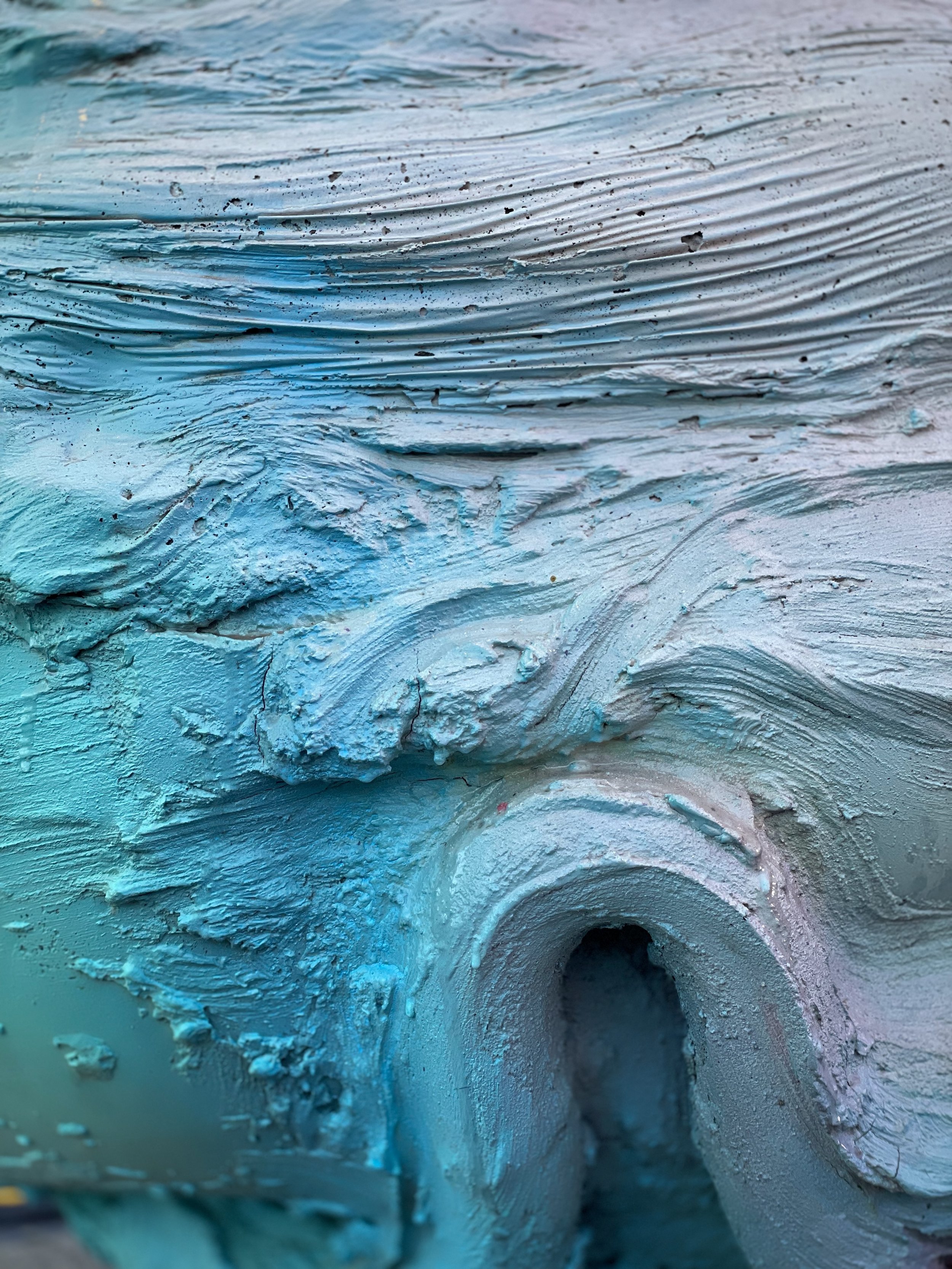
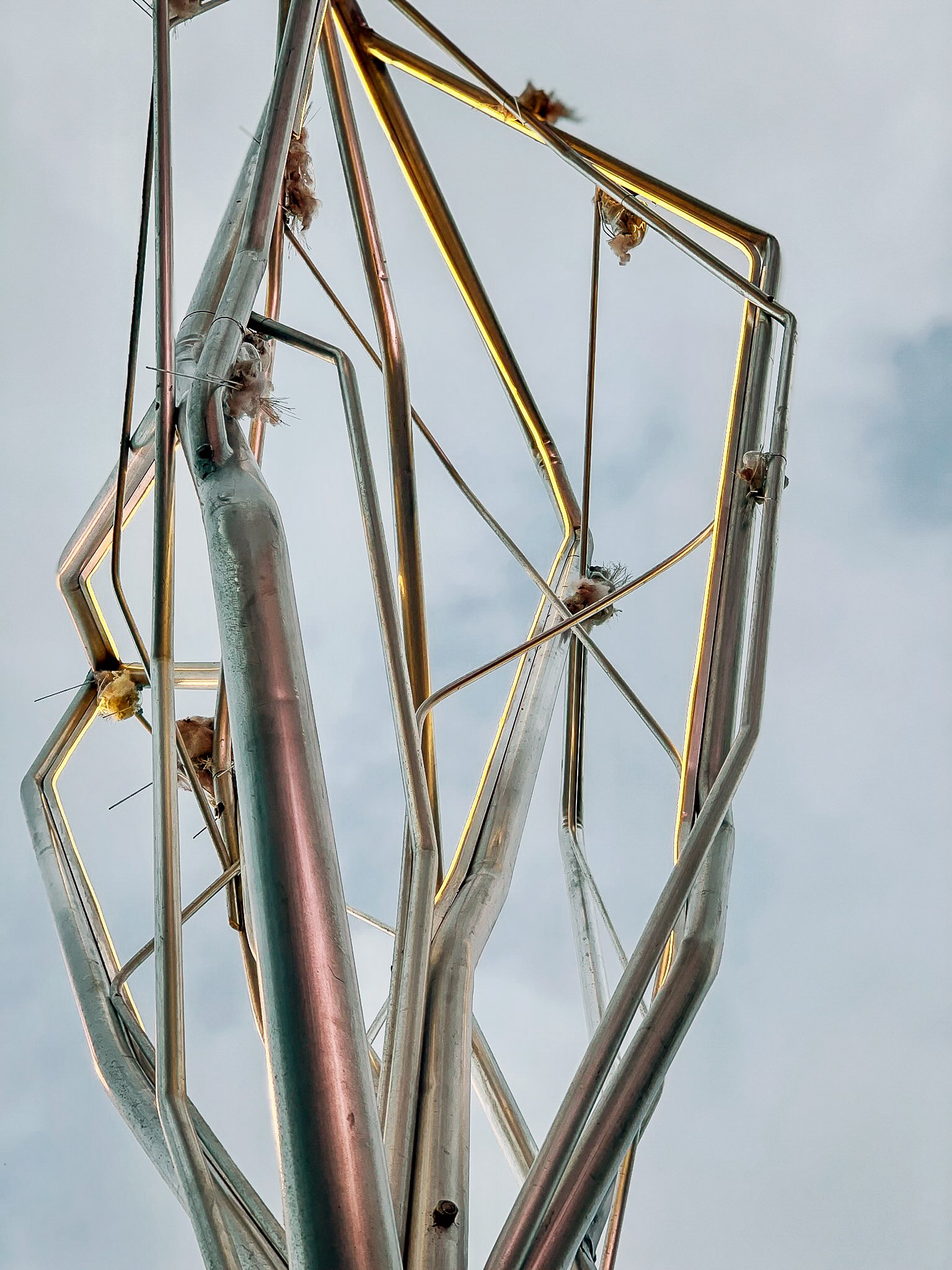













Adelaide Festival Centre Plaza
GRC, Aluminium, paint, LED lighting, resin, pewter
‘aeolidida’ may not be the easiest of words to pronounce. It’s not a familiar looking word. It’s a bit of a tongue twister but has a nice round sound to it, and it feels good when you write it by hand. The word offers up abstract and fictional associations, but it also refers to a real life species of soft bodied sea creatures, more commonly known as Sea Slugs. These creatures, which inhabit all the oceans of the world, often present themselves in the most fantastic, elegant forms and vivid colour patterns. This is something that they themselves may not be able to appreciate, given that their eyes are so small that they can probably only see dark and light tones. They make up for this lack of sight with other more sensitive sensory organs (that of touch, smell and taste). They are hermaphrodites, containing both male and female sexual organs, and most of them can regrow their head if it comes off. Nice.
As a sculpture made specifically for the 50th anniversary of the Adelaide Festival Centre, it’s site-specificity relies largely on it being a contrast to its surroundings, a kind of organic alien form within an otherwise urban environment of geometry and functionality. Its textured and patterned skin is an accumulation of haptic memories and sensations. For a form made of concrete, it is relatively lively looking, free-forming and suggestive of being in a state of flux. Its extrusions, or ‘branches’ are upward and celebratory in gesture, resonating with memories of the very first public performance given on the Festival Centre stage. The glowing rhythm played out in these branch forms is a luminescent visual echo transcribed from the sounds of Beethoven’s Fidelio which was played here 50 years ago.
Top view looking over the Dunstan Playhouse and Torrens walkway bridge where the sculpture is situated
Top view looking over the Dunstan Playhouse and Torrens walkway bridge where the sculpture is situated